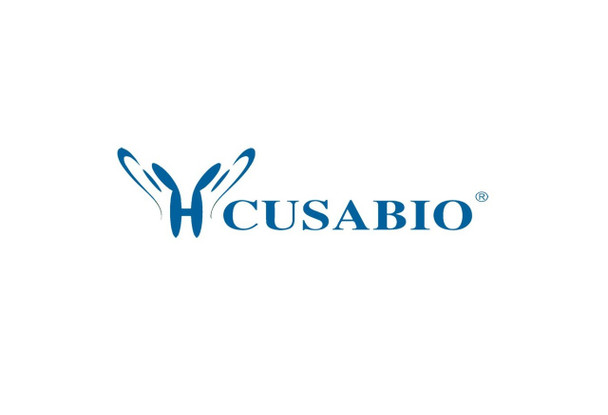Cusabio Virus & Bacteria Recombinants
Recombinant Rotavirus X Outer capsid protein VP4, partial | CSB-YP434929RIR
- SKU:
- CSB-YP434929RIR
- Availability:
- 3 - 7 Working Days
Description
Recombinant Rotavirus X Outer capsid protein VP4, partial | CSB-YP434929RIR | Cusabio
Alternative Name(s): Hemagglutinin
Gene Names: N/A
Research Areas: Others
Organism: Rotavirus X (isolate RVX/Human/Bangladesh/NADRV-B219/2002/GXP[X]) (RV ADRV-N) (Rotavirus (isolate novel adult diarrhea rotavirus-B219))
AA Sequence: MSLRSLLITTEAVGETTQTSDHQTSFSTRTYNEINDRPSLRVEKDGEKAYCFKNLDPVRYDTRMGEYPFDYGGQSTENNQLQFDLFTKDLMADTDIGLSDDVRDDLKRQIKEYYQQGYRAIFLIRPQNQEQQYIASYSSTNLNFTSQLSVGVNLSVLNKIQENKLHIYSTQPHIPSVGCEMITKIFRTDVDNENSLINYSVPVTVTISVTKATFEDTFVWNQNNDYPNMNYKDLIPAVTKNSIYHDVKR
Source: Yeast
Tag Info: N-terminal 6xHis-tagged
Expression Region: 1-249aa
Sequence Info: Partial
MW: 30.8 kDa
Purity: Greater than 85% as determined by SDS-PAGE.
Relevance: Spike-forming protein that mediates virion attachment to the host epithelial cell receptors and plays a major role in cell penetration, determination of host range restriction and virulence. Rotavirus entry into the host cell probably involves multiple sequential contacts between the outer capsid proteins VP4 and VP7, and the cell receptors
Reference: "Whole genomic characterization of a human rotavirus strain B219 belonging to a novel group of the genus Rotavirus." Nagashima S., Kobayashi N., Ishino M., Alam M.M., Ahmed M.U., Paul S.K., Ganesh B., Chawla-Sarkar M., Krishnan T., Naik T.N., Wang Y.-H. J. Med. Virol. 80:2023-2033(2008)
Storage: The shelf life is related to many factors, storage state, buffer ingredients, storage temperature and the stability of the protein itself. Generally, the shelf life of liquid form is 6 months at -20?/-80?. The shelf life of lyophilized form is 12 months at -20?/-80?.
Notes: Repeated freezing and thawing is not recommended. Store working aliquots at 4? for up to one week.
Function: Spike-forming protein that mediates virion attachment to the host epithelial cell receptors and plays a major role in cell penetration, determination of host range restriction and virulence. Rotavirus entry into the host cell probably involves multiple sequential contacts between the outer capsid proteins VP4 and VP7, and the cell receptors (By similarity).
Involvement in disease:
Subcellular Location: Outer capsid protein VP4: Virion, Host rough endoplasmic reticulum, Note=Immature double-layered particles assembled in the cytoplasm bud across the membrane of the endoplasmic reticulum, acquiring during this process a transient lipid membrane that is modified with the ER resident viral glycoproteins NSP4 and VP7, these enveloped particles also contain VP4, As the particles move towards the interior of the ER cisternae, the transient lipid membrane and the non-structural protein NSP4 are lost, while the virus surface proteins VP4 and VP7 rearrange to form the outermost virus protein layer, yielding mature infectious triple-layered particles (By similarity), SUBCELLULAR LOCATION: Outer capsid protein VP8*: Virion, Note=Outer capsid protein, SUBCELLULAR LOCATION: Outer capsid protein VP5*: Virion
Protein Families: Rotavirus VP4 family
Tissue Specificity:
Paythway:
Form: Liquid or Lyophilized powder
Buffer: If the delivery form is liquid, the default storage buffer is Tris/PBS-based buffer, 5%-50% glycerol. If the delivery form is lyophilized powder, the buffer before lyophilization is Tris/PBS-based buffer, 6% Trehalose, pH 8.0.
Reconstitution: We recommend that this vial be briefly centrifuged prior to opening to bring the contents to the bottom. Please reconstitute protein in deionized sterile water to a concentration of 0.1-1.0 mg/mL.We recommend to add 5-50% of glycerol (final concentration) and aliquot for long-term storage at -20?/-80?. Our default final concentration of glycerol is 50%. Customers could use it as reference.
Uniprot ID: A9Q1L0
HGNC Database Link: N/A
UniGene Database Link: N/A
KEGG Database Link: N/A
STRING Database Link: N/A
OMIM Database Link: N/A









